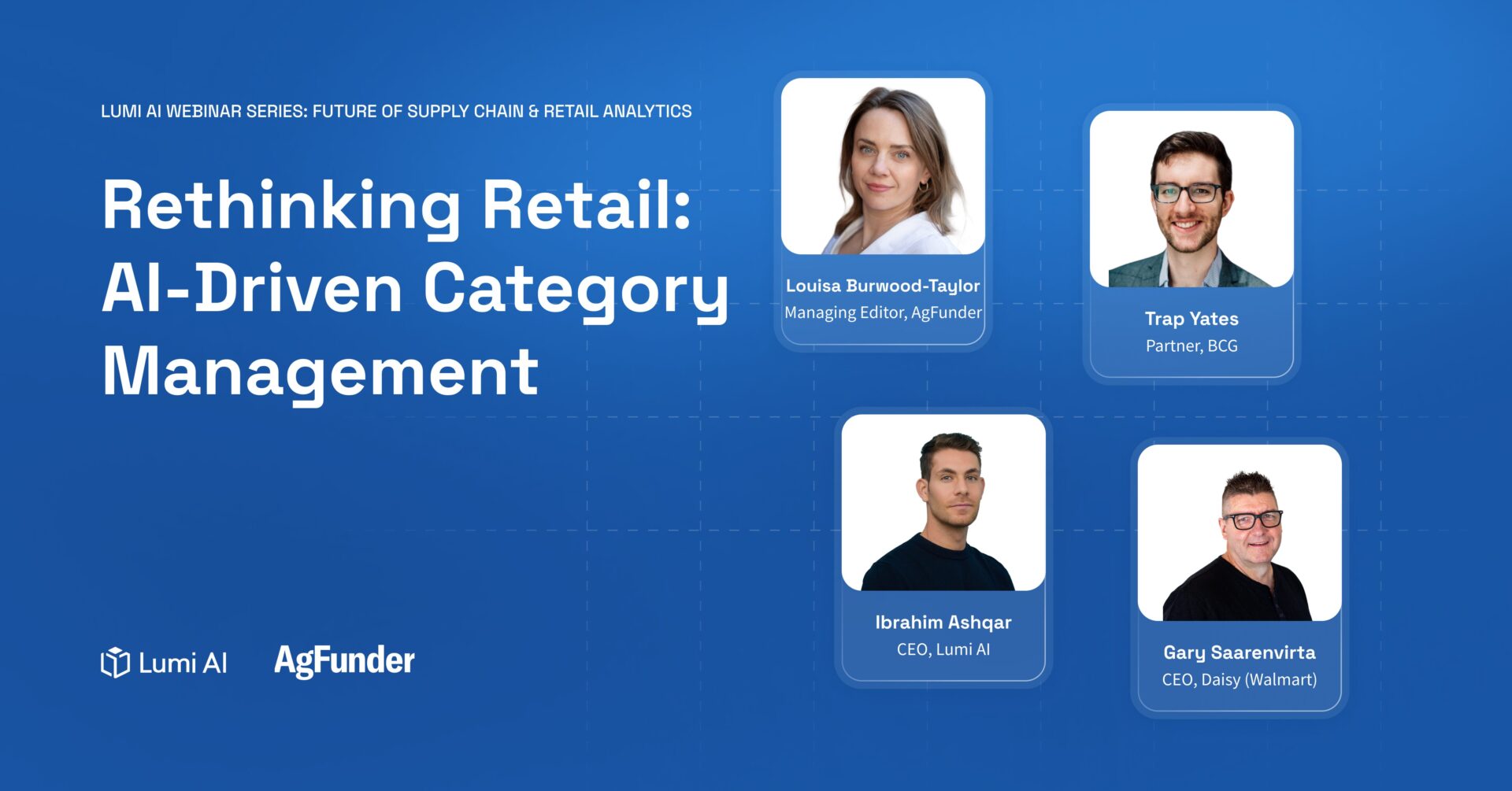
Category management – the not-so-glamorous engine behind what ends up on a retail shelf, at what price, and in what quantity – has been stuck in first gear for years. Outdated planning cycles. Scattered data. Manual execution. And decisions that move slower than the shopper retailers are trying to serve.
On paper, these sound like easy problems to fix. In practice, they’ve been a tough nut to crack. Long sales cycles, clunky tech integrations, and the not-so-small matter of training already overworked teams, have kept progress filing itself under ‘someday, maybe’.
With AI becoming better, faster, and more usable, the natural question is: could this time be different?
The short answer is: potentially… but only if we pair the right use cases with the humans and habits that, according to a BCG retailer survey, drive 70% of AI’s value.
AI does best when the rules are clear, the data is clean, and success is clearly defined. That’s why parts of category management (with all its spreadsheets, planograms, and pattern-heavy logic) are getting nudged out of cruise control.
Here’s a look at where AI is already making a dent:
The shelf: assortment, merchandising, and execution
- Localized assortment optimization, where AI helps decide which products go where and in what mix, by crunching demand signals, margin data, and shopper needs.
- Impact Analytics, which raised $40 million in 2024, helps CPGs analyze shopper and sales data to figure out ideal product mixes and pricing by retail account, not by region.
- Aravita, a Brazil-based startup backed by Qualcomm Ventures, helps supermarkets fine-tune order quantities for perishables using data from weather, demand patterns, inventory and shelf life.
- Digital visual merchandising and store execution.
- Flagship, which raised $5.5 million in 2024, builds digital twins of retail stores using computer vision. That means teams can play with layout ideas, try different product setups, and see what actually drives sales, before making real-world changes.
- Retailers such as Lowe’s are using AI, computer vision, and digital twins to test layouts, adjust placements based on season or weather, and react faster to viral trends
The signal: forecasting, trends, and pricing
- Forecasting that sees what’s coming: using real-time signals to avoid empty shelves, and spotting demand swings before they show up in Nielsen.
- Black Swan Data (acquired by Mintel in June) made its name helping food brands spot rising trends before they were obvious – using AI to sift through social chatter and consumer behavior to predict which flavors, ingredients, or product claims might be the next big thing.
- Smarter pricing and promotion planning, where AI learns from past sales and elasticity models, and suggests the best time to drop a price or run a promo, nudging shoppers to finally grab that fancy French cheese that they’ve been circling for weeks.
The shopper: personalization and relevance
- AI that understands the shopper.
- Constructor, which extended its Series B by $25 million in 2023, uses clickstream-based AI to personalize discovery and search in real time. With Target Australia, it reported a 9% lift in search revenue and a 93% drop in bounce rates.
So… why isn’t everyone doing it?
Because tech isn’t the only part of the AI equation. And according to BCG, it might not even be the hardest. Data readiness, people, and process matter just as much. And that’s where most teams get stuck.
In a 2025 BCG survey:
- 1 in 3 data points used by merchants was wrong
- ~40% of available tech goes unused
- 50% of merchants hadn’t received training on analytics tools
The top blockers? Organizational resistance, legacy systems, and a lack of time.
In short: AI models, clean data, and great UX won’t move the needle unless they also tackle the habits, skills, and workflows that make decisions actually happen (and stick).

Continuing the conversation
On July 30, leaders from BCG, Deloitte, Daisy Intelligence, and AgFunder portfolio company Lumi AI will join AgFunder’s head of news and research Louisa Burwood Taylor for a live discussion on how AI is being used in category management and merchandising, and what it takes to move from pilot to practice.
Webinar: AI Data-Driven Category Management
July 30 | 12pm ET | Online
Find our more and register here
The post Category management x AI: real fix or just another buzzword? appeared first on AgFunderNews.




